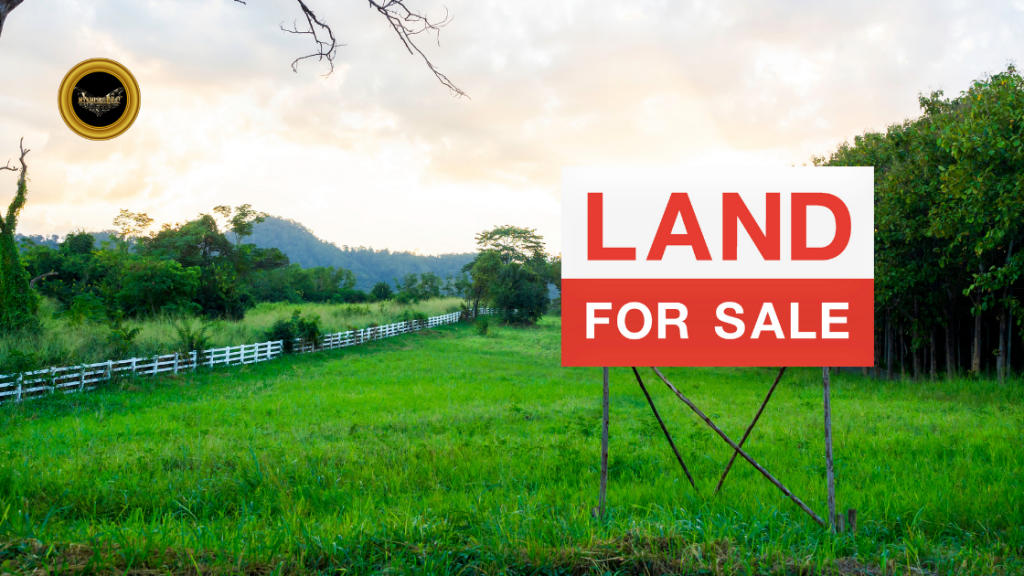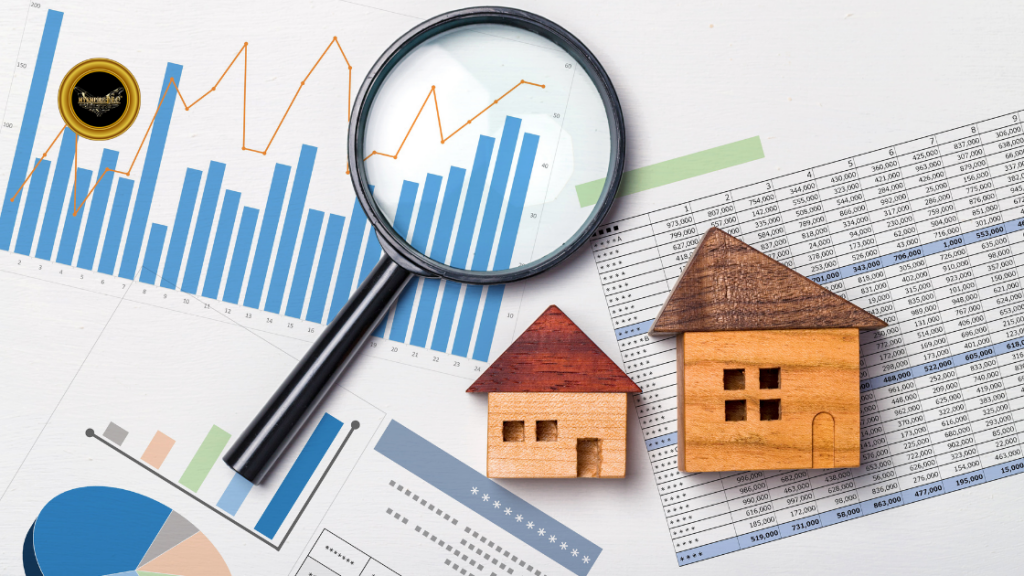
Here Is What You Should Know About Wholesaling Lots & Vacant Lands For Massive Profits
When it comes to real estate investing, there are lots of different strategies that you can use in order to make money or to break into real estate investing.
One such strategy is wholesaling vacant lots and other pieces of landed properties.
This can be a great way to get started in real estate investing, but there are some things that you should know before you get started.

First of All, What is Real Estate Investing?
Real estate investing is the purchase and ownership of real estate for the purposes of earning income, either through rental or capital gain.
Real estate investors often purchase properties below their market value with the intention of holding them as long-term investments.
Real estate can be a very profitable investment vehicle, but it is important to understand the risks and rewards involved before making any decisions.
As a matter of fact, the land or lot (if you will) is the main part of real estate; that’s why it’s called “REAL ASSET”.

Everything else in that puzzle is called the improvement because real estate is all about the location.
In this article, we will discuss some of the key things that you need to know about wholesaling vacant lots.
1. How To Find Lots & Vacant Lands To Flip & Wholesale To Real Estate Investors
2. Lots, Vacant Lands & Sub-Divisions
3. The risk involved in wholesaling vacant lots
4. The Pros and cons of wholesaling vacant lots
5. Five Tips To Real Estate Wholesaling Vacant Lands & Lots For Profits

How To Find Lots & Vacant Lands To Flip & Wholesale To Real Estate Investors
Real estate investors are always on the lookout for new deals and properties to add to their portfolios.
One great source of deals for real estate investors are vacant land and lots; and that’s good news for wholesalers.
The best way to find lots and vacant lands to wholesale is by finding motivated sellers.
These are people who are desperate to sell and are willing to let go of their properties at lower prices (Deep Discounts).
You can find motivated sellers by looking for real estate listings that have been on the market for a long time, or by contacting homeowners who are about to have their homes foreclosed on.
Obviously, these homes are not the lands we are talking about.
But you can find lands with the same software that we use to pull data of distressed home owners who may be facing foreclosure.

Free Software Trial –> www.EmpireBIGData.com
By focusing on marketing to pre-foreclosures, vacant properties and non-owner occupied properties consistently, you will attract prospective land sellers who simply want to sell quickly.
That’s how I like to do this.

Real Estate Wholesaling Business Model Breakdown
In the real estate wholesaling business, things are pretty straightforward.
The wholesale investor finds a property that is being offered at a DEEP discount (35% or more) and then sells it to another investor or buyer at a higher price.
This allows the wholesale investor to earn a profit without ever owning the property himself.
Here Are a Few Key Things To Keep In Mind When Wholesaling Vacant Land & Properties.
First, it’s important to have a good understanding of the market so that you can identify lands and properties that are being offered at a deep discount.
Back in the days, you would have needed a licensed and local real estate agent for that.
But things have changed.
All you need is a web based data software which I will share with you again in the end of this article.
Secondly, you need to be able to act quickly to negotiate and lock these lots and landed properties up in a purchase contract before someone else snatches them up.
And finally, it’s essential to have a strong network of investors and buyers who you can wholesale properties to when you find deals.
Keep in mind that there is a certain sector of the cash buyers that are interested in land investing; asking others who are the majority will do just fine.
With the same software I want to share with you free at the end, you can build a cash buyer’s network solidly over time.
Sourcing vacant lands and lots is another additional revenue source for wholesale real estate investing.
Lots, Vacant Lands & Sub-Divisions
As real estate professionals, you should be aware of the process of subdividing land for the purpose of sale.
When parcels of land are subdivided, they are typically offered in lots that are smaller than the size of the original parcel.
This makes it easier to sell, as it is easier for buyers to visualize what they will be getting.
It also makes it easier to finance, as the loans can be smaller and the interest rates may be lower.
The process of subdividing land can be complicated.
So it is important to work with a real estate professional who is familiar with the process.

The Risk Involved In Wholesaling Vacant Lots
First, it can be difficult to find a buyer for vacant land, so you may have to wait a long time before you can sell it.
However, it gets better the more you do it as you get better with understanding of land market value over time.
Second, there is a risk that the zoning or planning regulations in the area could change, making the land unsuitable for development.
That same risk trickles down to you as a wholesaler.
Finally, there is always a risk that the seller could back out of the sale at the last minute.
But this risk is the same across board in the real estate industry.
The Pros & Cons Of Wholesaling Vacant Lots
The main pros of wholesaling vacant land are that it is a very quick and easy way to make money, and there is a lot of potential profit to be made.
Since there is less competition in the market for land than for other types of real estate, it is possible to find good deals on land that can be resold at a higher price.
There are also some cons to consider when wholesaling vacant land.
It can be more difficult to find buyers for land than for houses or other types of real estate.
So it is important to have a solid marketing strategy in place.
Land can also be more difficult to finance than other types of property, so it is important to have a clear idea of what you plan to do with it.
Most cash buyers and investors are not interested in land.
5 Tips To Real Estate Wholesaling Vacant Lands & Lots For Profits
Tip #5 – Non-Functioning
When you are dealing with a vacant land, lot or a property that has been deemed a tear down, it’s important to keep it at the back of your mind that these are non-functioning properties.
Why is that important?
If the property is presently useless and not performing at least with respect to usability or utility, the owners should be willing to understand the trade-off that comes with that.
If they can afford to put the property to use, they would be doing that because they also get to make more money.
It’s simple.
If the property is useful, there would be automatically more demand to buy or lease.
And More Demand = High Price.
Unfortunately for the seller, vacant lands and tear downs fall in that category; non-functioning properties or non-performing assets.
So when a seller reaches out about non-functioning properties, it’s usually because they can’t afford to hold on to it.
That’s a negotiating point for you and you shouldn’t be afraid of leveraging that in your confidence, posture and negotiation stamina.
Tip #4 – Property Zoning Type
During your consulting phone session, I want you to ask the seller what type of property the area or land parcel is zoned for.
Is the property zoned for residential, commercial, mixed-use or industrial use?
Is the lot in a sub-division area at all?
If it is not in a sub-division area, (if it’s in a rural area), you need to start your offer with 10% of whatever the assessed value of the land is.
If it’s however in a sub-division, use regular comparable market analysis method on the nicest comparable as follows.
You maximum allowed offer (MAO) will be 20% of the after repair value or after construction value as opposed to the regular 65%.
Here is more information about that.
Tip #3 – From ARV to ACV
On regular deals with functioning properties which can still be a non-performing asset, we have the ARV which stands for after repair value.
The after repair value is exactly what it sounds like; what is the property worth in today’s market if it was fully repaired and upgraded?
But with vacant lands and tear downs, the investor fixer and flipper will not be repairing the property.
On vacant land, a new construction will be an ideal way to make the property function and perform.
For a tear-down, the existing improvement on the land has to be demolished and torn-down which is an additional cost before the new construction.
So the value needed to be determined is the after construction value (ACV) and not the after repair or rehab value.
The same method used to create the ARV is the same method you will use to come up with an ACV… at least to start with.
But in addition, you may need to have the square footage of the proposed new improvement or building on the land.
Ideally, the proposed square footage should be within the range of the average in the area and it’s not a bad idea to talk to investors in that area.
But again, for lands and lots, your maximum offer should be 20% of the ARV/ACV or less.
Try out a free tool I’ve created for you at:
To calculate and estimate ARVs and ACVs.
Tip #2 – Sub-Division
For big parcels of land (I consider anything bigger than one acre to be a big parcel of land), I want you to ask the seller if sub-division would be necessary.
Subdivision is the process of dividing a big parcel of land into smaller but usable plots for optimal and economical use.
A cash buyer would want to know this information.
Speaking of cash buyers….
Tip #1 – Cash & Land Buyers
With regular functioning properties, I want you to simply multiply the after repair value (ARV) with 65% and adjust the product with the estimated cost of repair.
That will create a maximum allowable offer; the MAO.
But with vacant lots, lands and tear downs, it’s best to reach out to all the cash and land buyers within the area of the subject property first.
I want you to go to www.EmpireBIGData.com, set up a free trial account and pull up everything you find under the quicklist cash buyer in that zip code.
You will also be able to create contact campaigns for them within the software.
Ask them directly how much they would pay for that land.
Let’s say, 2 to 3 cash buyers say they would pay $70,000 for the property immediately, use that to reverse engineer your desired profit.
I want you to present an offer of $40,000 and be open to accept up to $65,000.
You can then potentially make $5K-$30,000.
I will be honest with you.
There have been times over the years that I feel that wholesaling vacant lands wasn’t worth my time because I had a lot more going on.
More About Lands & Lots For Wholesale Real Estate
In order to wholesale vacant land, you need to be able to accurately assess the value of the property.
This means being familiar with the local market conditions and having a good understanding of what similar properties have sold for in the past.
You also need to have a solid marketing plan in place to generate interest in the property from potential cash buyers as most of them don’t do lands and lots.
Keep in mind that there is more involved in wholesaling land than simply finding a buyer and seller.
There are often zoning restrictions and other regulations that need to be taken into account.
Again, it’s important to work with a real estate professional who has experience in this area to make sure that you are fully informed about all of the potential pitfalls.
A very good real estate agent in you back pocket won’t hurt.
This is a great way and avenue to build relationships with specialized real estate agent for specialized real estate transactions; crafting out your own little niche.
In Conclusion, Here Is The Main Lesson
If you can’t find sold land comparable on Propstream (www.EmpireBIGData.com) by selecting category “lands” stacked against the quicklist cash buyers, check Zillow.
But before doing all of that, make sure that you have collected as much data from the seller so that you can avoid unnecessary back and forth.
If they are not willing to give you all of the information in detail including zoning and subdivision information, they are simply not a motivated seller.
Be aware that most successful wholesale real estate investors will process any type of deals.
Don’t focus on lots and vacant lands alone as that could be a faster route to frustration.
Real estate wholesalers are simply viable sources of real estate investments and deals; the whole real estate industry benefit greatly from the activities of this business model.
The real estate business is ultimately about finding and creating opportunities.
Non-performing assets such as vacant lands and lots are great money making opportunities.